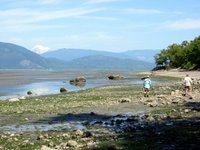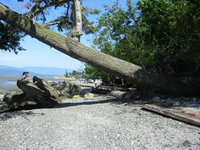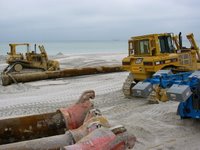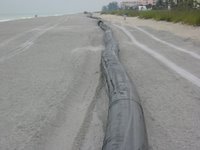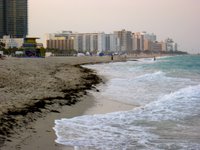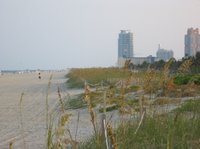skip to main |
skip to sidebar


This was a new one for me. It's a log crib, bolted together with stainless cable and hardware, extending out in front of the base of the bluff. It was built within the last year or so, presumably as a softer approach to erosion control than a conventional bulkhead. I'm still struggling with what to make of it. If nothing else, I wish it didn't extend so far onto the beach and that it had incorporated soil and plantings. Functionally, it appears equivalent to a failing timber seawall -- maybe that's a good thing. I wonder what the hardware will look like in 20 years?



 This shoreline south of the mouth of Chimacum Creek was filled and used for log storage for decades. This winter, WDFW (who acquired the site several years ago) removed much of the old fill, restoring over 10 acres of intertidal shoreline. The work focused on the excavation of fill and the lining of the landward bank with large wood - the new intertidal area is being allowed to restore itself. This is already proving to be a great opportunity to observe how an area like this evolves, both geomorphologically and ecologically.
This shoreline south of the mouth of Chimacum Creek was filled and used for log storage for decades. This winter, WDFW (who acquired the site several years ago) removed much of the old fill, restoring over 10 acres of intertidal shoreline. The work focused on the excavation of fill and the lining of the landward bank with large wood - the new intertidal area is being allowed to restore itself. This is already proving to be a great opportunity to observe how an area like this evolves, both geomorphologically and ecologically.
A sandy berm has already begun to build along the outer edge of the site, pretty much along the edge of the original fill. It is forming as a bar or low spit extending northward toward the creek. If there is sufficient sediment to allow the feature to continue building, I suspect it will create a large lagoon with a fringing salt marsh - though this will take several years. If a spit continues to form, the south end of Indian Island might be a good reference (although far more complicated). Jetty Island in Everett might also be a good analog, although that completely artificial site has an abundance of sediment (nourishment with dredged sand) and the plantings were done as part of the project. Chimacum is on its own, although there might be a way of assuring continued sediment with a small feed source at the south end and there might be some ways to actually foster the development of marshy areas.The amount of large woody debris placed along the inner shoreline of the new project is remarkable. What that bank needs the most is live wood, not dead wood, though hopefully that will come with time. It might be nice to have sprinkled a few large logs out into the prospective marsh area, although I bet this happens by itself within a couple years.
This is one of the larger nearshore restoration projects I can think of, other than dike breaching in the larger deltas. The folks involved in this one deserve lots of credit for making it happen. This and Jimmy-Come-Lately Creek (Sequim Bay) make a great pair of projects for many restoration field trips over the next few years.


